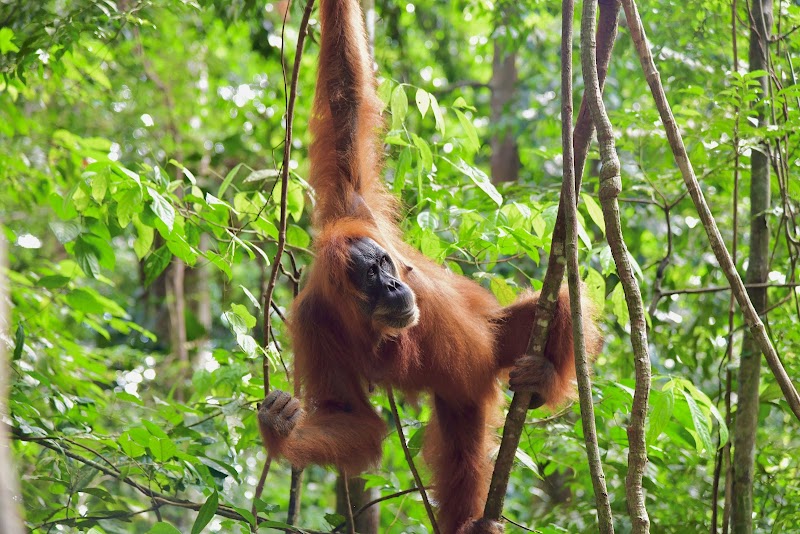
Mount Leuser National Park Adventures
Mount Leuser National Park is a vast rainforest reserve in northern Sumatra, Indonesia, offering rich biodiversity and exceptional opportunities for jungle trekking, wildlife observation, and river exploration.
About Mount Leuser National Park

Mount Leuser National Park spans over 1.1 million acres across the provinces of Aceh and North Sumatra, protecting one of Southeast Asia's most pristine tropical rainforests. The park's geography features rugged mountains, including Mount Leuser itself, peaks rising above 3,400 meters, dense lowland forests, and fast-flowing rivers. Ecologically, it is one of the most biologically diverse places on Earth, home to endangered species such as the Sumatran orangutan, Sumatran tiger, Sumatran rhinoceros, and Asian elephant. The park's varied habitats range from montane forests at higher elevations to peat swamp forests and river valleys, providing vital refuges for wildlife and rare plants. Established in 1980, the park forms a critical core of the larger Leuser Ecosystem, a key conservation area in Indonesia. For outdoor enthusiasts, Mount Leuser National Park offers trails leading to rugged mountain summits and waterfalls, primate watching excursions, and river adventures such as whitewater rafting on the Alas River. Notable landmarks include the ascent to the summit of Mount Leuser and scenic viewpoints over the rainforest canopy. Visitor appeal is focused on immersive jungle trekking guided by local experts, wildlife photography, and cultural encounters with nearby Batak and Gayo communities. The park remains relatively remote, demanding good physical preparation and respect for wilderness conditions from visitors. Its globally significant biodiversity and scenic beauty make it a premier destination for nature travelers in Indonesia.
Highlights
Summit of Mount Leuser with panoramic rainforest views
Prime habitat for observing endangered Sumatran orangutans in the wild
Alas River whitewater rafting and river canyon landscapes
Remote jungle camps providing immersive wilderness experience
Notable Natural Features
Mount Leuser Summit
The highest peak in the park at 3,404 meters, offering challenging hikes and commanding views over the rainforest canopy.
Alas River
A key whitewater river winding through the park, favored for rafting and supporting riparian ecosystems.
Sumatran Orangutan Habitat
Protected forest areas within the park where one of the world’s most endangered great apes can be seen in their natural environment.
